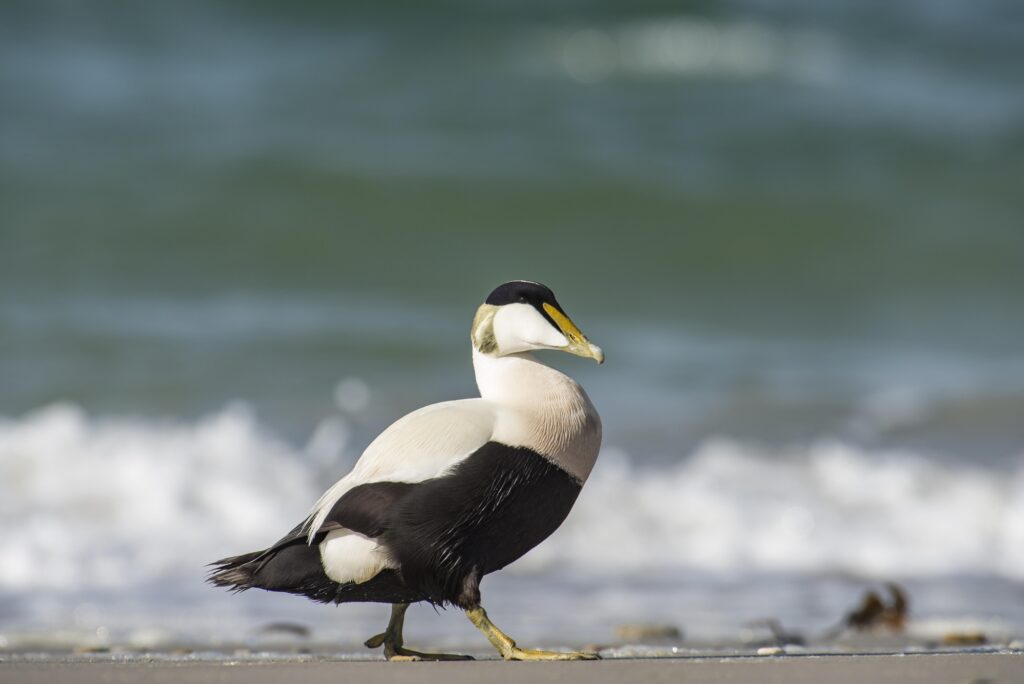Alaska is well known for its large and diverse population of birds. From bald eagles to ptarmigans, there are over 470 different species of birds that call the Last Frontier home. But of all these feathered friends, ducks are the favorite of many Alaskans and visitors.
Alaska is home to a variety of different duck species, each with its own unique plumage, behavior, and habitat preferences.
While some ducks are commonly found in urban areas or around freshwater habitats like quiet lakes and ponds, others are more resistant to human disturbance and prefer to stick to more remote parts of the state.
Here are 30 different duck species that can be found in Alaska!
Most Common Ducks in Alaska
With so many ducks to run through, it can quickly become overwhelming trying to identify each one. So, let’s start with the most common ducks in Alaska before moving on to the rarer species.
Mallard
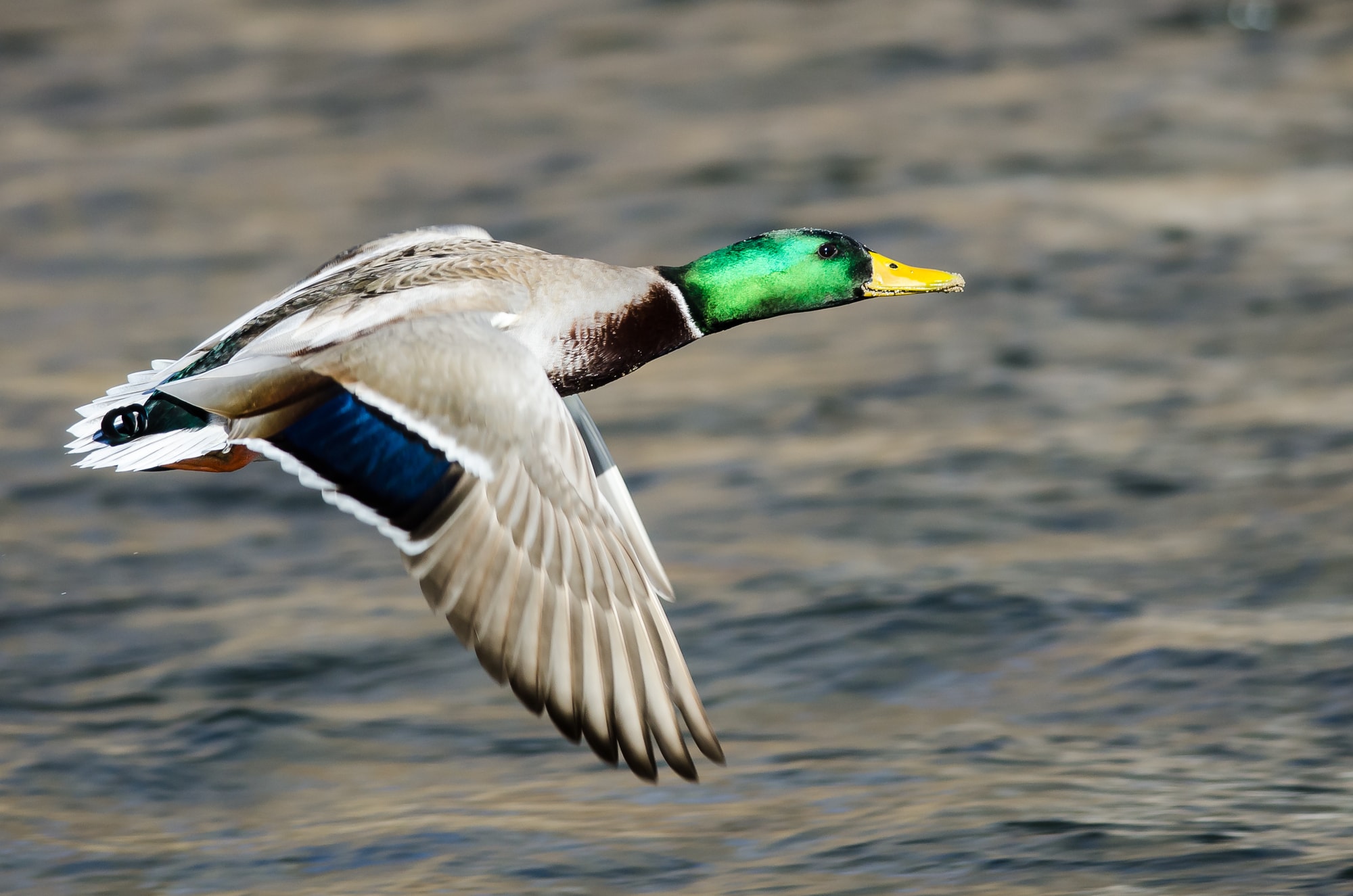
- Scientific Name: Anas platyrhynchos
- Length: 20–26 in
- Weight: 1.5–3.5 lb
- Wingspan: 32–39 in
The Mallard is one of the world’s most widespread and easily recognizable duck breeds. These ducks are often found in urban areas and can be seen year-round in many parts of Alaska. Mallards are easily distinguished by their green heads, brown bodies, and white tail feathers.
These ducks are easily recognizable by their green heads and yellow-orange bills, and they are a common sight in many parks and wetlands. Mallards are strong swimmers and skilled flyers, and they can often be seen close to shore, where they feed on aquatic plants and insects. In the winter months, mallards typically migrate south, but some birds will stay in Alaska if there is open water available.
Green-winged Teal
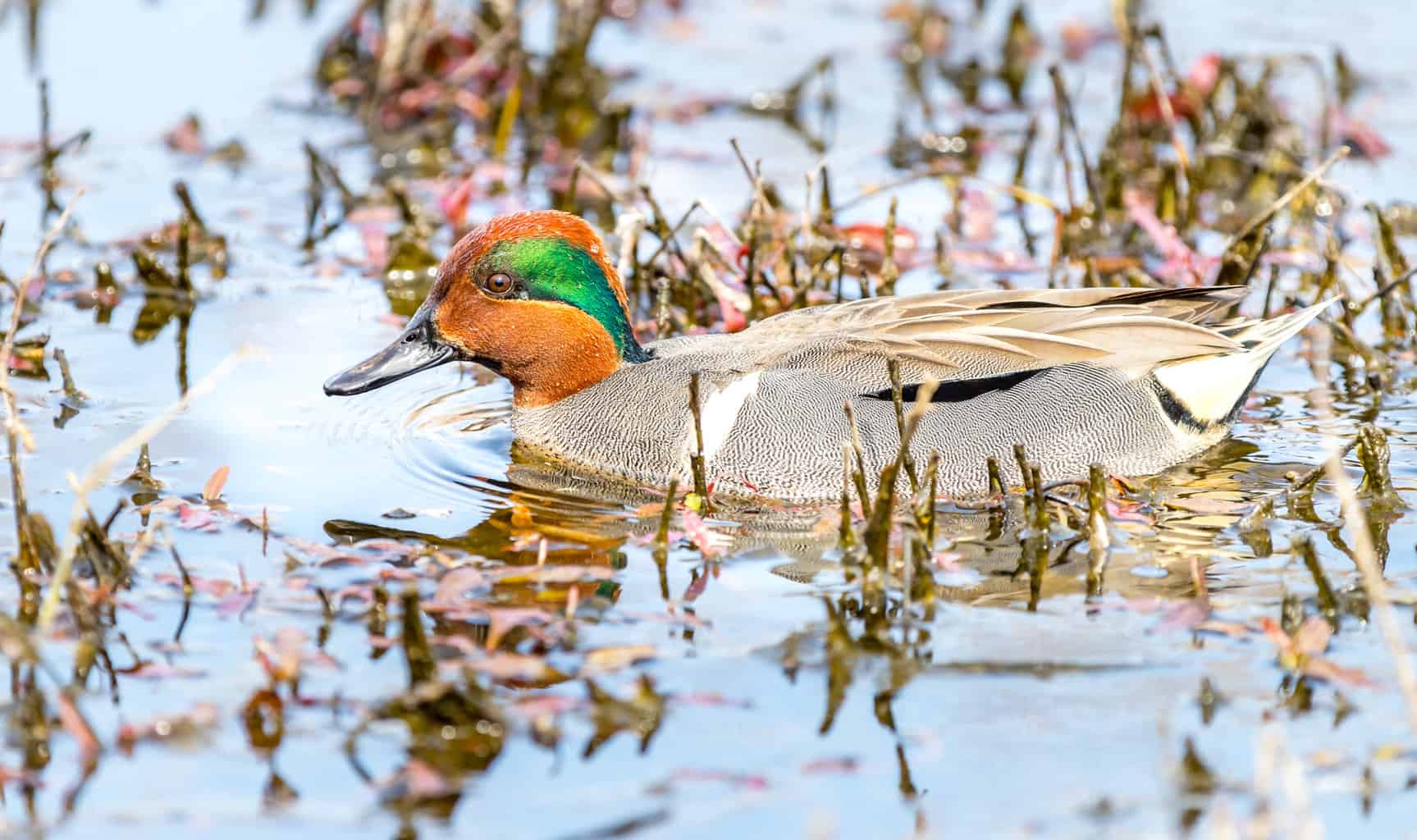
- Scientific Name: Anas carolinensis
- Length: 12.2–15.3 in
- Weight: 4.9–17.6 oz
- Wingspan: 20.5–23.2 in
Green-winged teals are small ducks that are closely related to mallards. These ducks can be found in wetland habitats across Alaska and are most active during the spring and summer months.
Green-winged teals are easily distinguished by their small size, green head plumage, and brown bodies. The Green-winged Teal is a popular bird in Alaska. Its small and compact body makes it excellent for swimming and hunting in the water.
As well, it has a long neck and a bill that is perfect for scooping up fish. The Green-winged Teal is a key part of the Alaskan ecosystem and is an important bird to watch for.
Bufflehead

- Scientific Name: Bucephala albeola
- Length: 13–16 in
- Weight: 9.5–19.4 oz
- Wingspan: 55 cm
Native to the western coastal waters of North and South America, the Bufflehead is a small but distinctive duck. The male Bufflehead is particularly striking, with a glossy black head and large white patches around the eyes.
During the breeding season, these patches expand to form a bright white cap. In winter, the Bufflehead’s plumage becomes more subdued, but the white patches remain a distinctive feature.
Buffleheads are known for their lively personality and acrobatic flying style. They often engage in playful chasing games with other ducks, and they aren’t afraid to dive deep underwater in pursuit of their prey.
Buffleheads typically nest in tree cavities, but they will also use man-made nest boxes. In Alaska, Buffleheads can be found in sheltered bays and inlets throughout the state.
They are popular birds with birdwatchers and offer a welcome splash of color in the winter landscape.
Northern Pintail

- Scientific Name: Anas acuta
- Length: 23–30 in
- Weight: 0.99–3.00 lb
- Wingspan: 31–37 in
The Northern Pintail is a species of duck that is native to Alaska. The male Northern Pintail has a long, black tail that extends beyond the length of its body, while the female has a shorter tail that doesn’t extend past its body.
The Northern Pintail is an excellent swimmer and can often be seen swimming in lakes and ponds. The Northern Pintail is a migratory bird and can often be seen flying in large flocks.
The Northern Pintail is an important species of duck in Alaska and is hunted for its meat and feathers. The Northern Pintail is a beautiful duck and is a popular bird among birdwatchers.
American Wigeon

- Scientific Name: Mareca americana
- Length: 17–23 in
- Weight: 1.129–2.932 lb
- Wingspan: 30–36 in
The American Wigeon is a species of dabbling duck that is native to North America. The bird is also known as the Baldpate, due to the white patch on its head. The American Wigeon is a relatively small duck, with a body length of around 20 inches.
The male bird has a green head and chest, with a white belly and gray back. The female bird is usually brown or gray in color. The American Wigeon typically inhabits marshes and wet meadows and can be found in both salt and freshwater habitats.
In Alaska, the bird can be found in many different regions, including the Aleutian Islands, the Kenai Peninsula, and Kodiak Island.
The American Wigeon plays an important role in the ecosystem, as it helps to control the population of aquatic insects. The bird is also a popular game bird and is hunted for its meat.
Greater Scaup

- Scientific Name: Aythya marila
- Length: 15–22 in
- Weight: 1.601–2.998 lb
- Wingspan: 28–33 in
The Greater Scaup is a species of duck that is found in North America, including the state of Alaska. The Greater Scaup is distinguished from other ducks by its black head and neck, white breast and belly, and blue-grey back.
The Greater Scaup is a diver, meaning that it feeds by swimming underwater in search of food. The Greater Scaup is an important species in the state of Alaska, where it is found in both fresh and saltwater habitats.
Further, the Greater Scaup plays an important role in the Alaskan ecosystem, and its numbers have been declining in recent years.
Gadwall
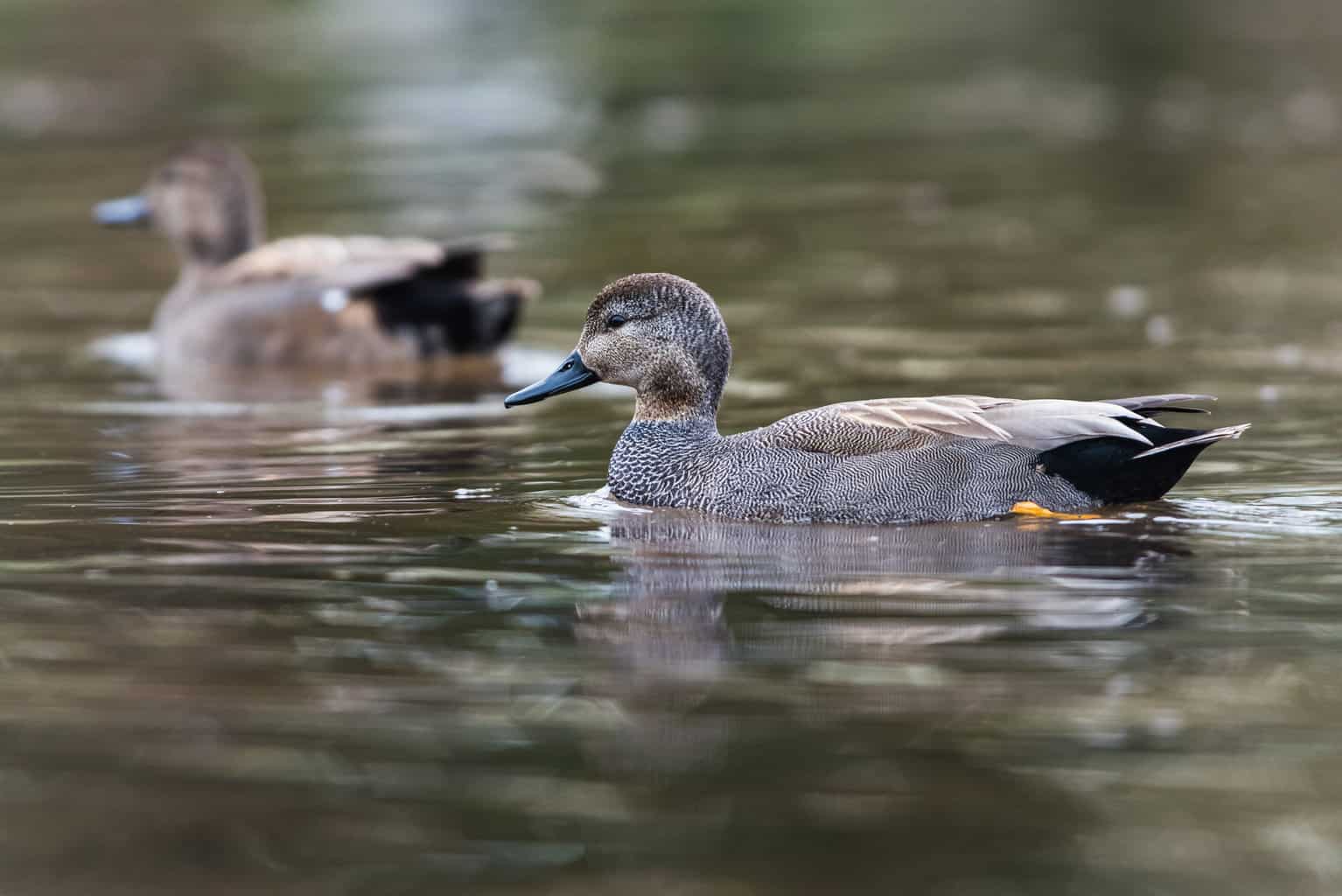
- Scientific Name: Mareca strepera
- Length: 19–23 in
- Weight: 30–35oz
- Wingspan: 31–33 in
The Gadwall is a beautiful duck that can be found in the state of Alaska. It’s a very popular bird among bird watchers and is also a good choice for hunters. The Gadwall is a medium-sized duck with a black bill and a white wing patch.
The body is gray, and the head is black. The Gadwall is a very graceful bird, and it’s known for its gentle nature. It is not uncommon for the Gadwall to mate for life, and they often raise their young together.
The Gadwall is an important part of Alaska’s ecosystem and plays a vital role in the food chain. Without the Gadwall, the state of Alaska would be a very different place.
Sea Ducks in Alaska
The sea is a prominent feature in the state of Alaska, and it is home to a variety of different ducks. Sea ducks are a type of duck that is well-adapted to life in the water, and they can be found in both fresh and saltwater habitats.
Sea ducks are an important part of the ecosystem, and they play a vital role in the food chain.
Spectacled Eider

The spectacled eider is a seabird that is found only in Alaska. The bird gets its name from the black and white feathers around its eyes, which look like spectacles.
The bird is typically found in coastal waters, but it can also be found inland. Further, this bird is most active during the day.
Common Eider
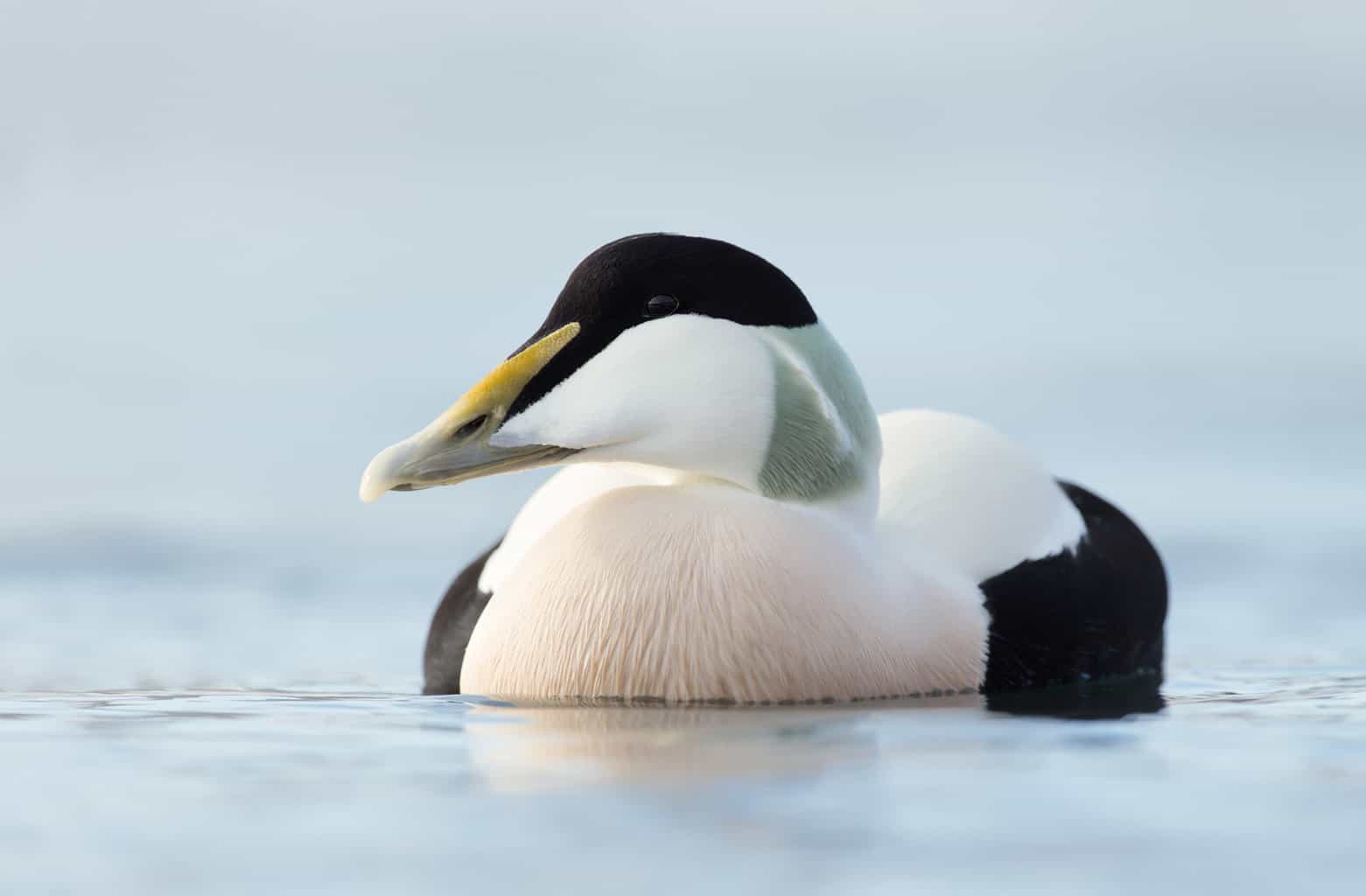
The Common Eider is a large bird that is found in Alaska. It has a black head and neck, a white body, and black wings. The Common Eider is a very good swimmer and can dive to depths of up to 200 feet, feeding on shellfish, crustaceans, and small fish.
King Eider
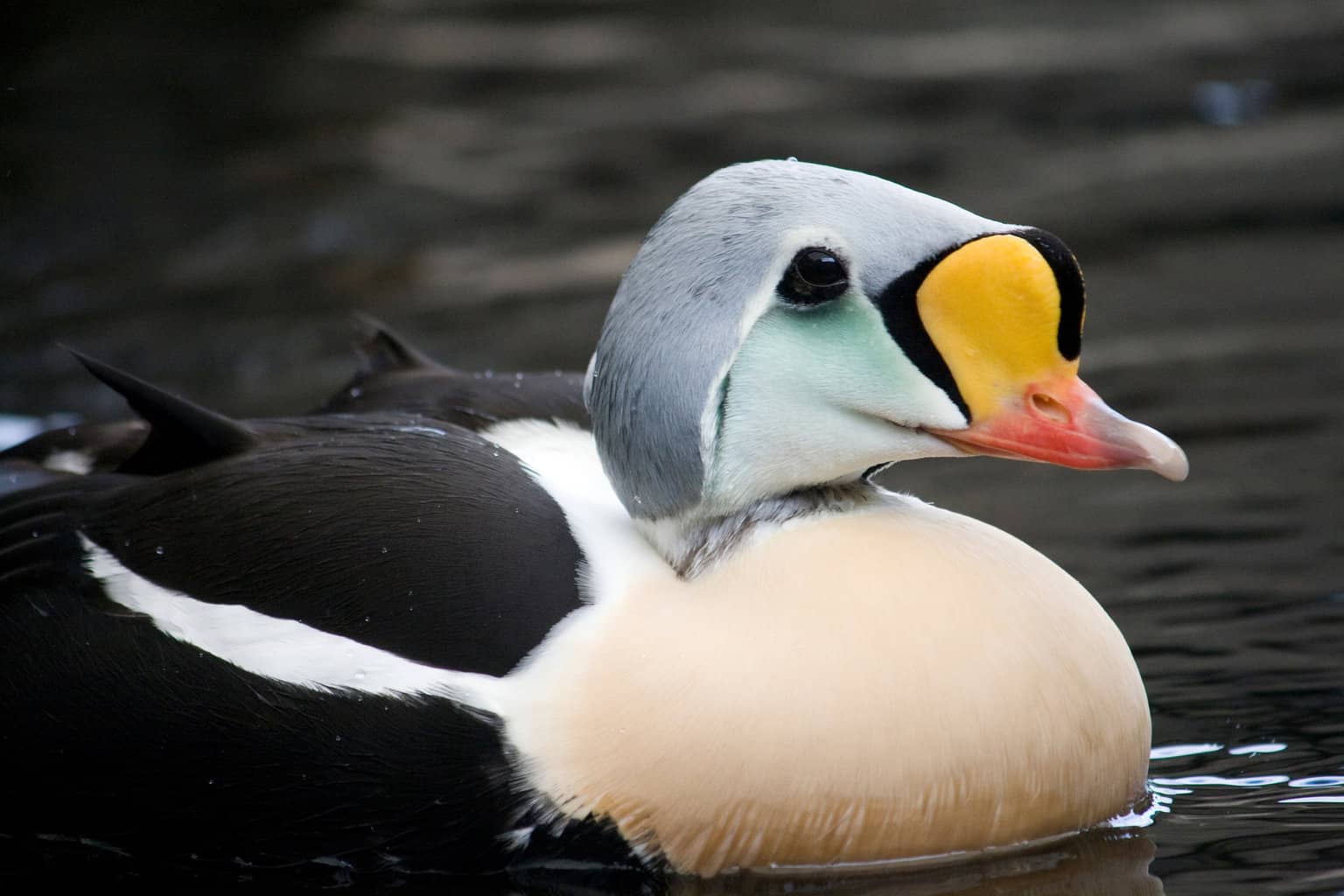
The King Eider is a type of duck that is found in arctic and sub-arctic regions, including Alaska.
The males are particularly striking, with bright white plumage and a purple-blue head. Females are less brightly colored, but they still have beautiful blue-gray plumage.
Steller’s Eider
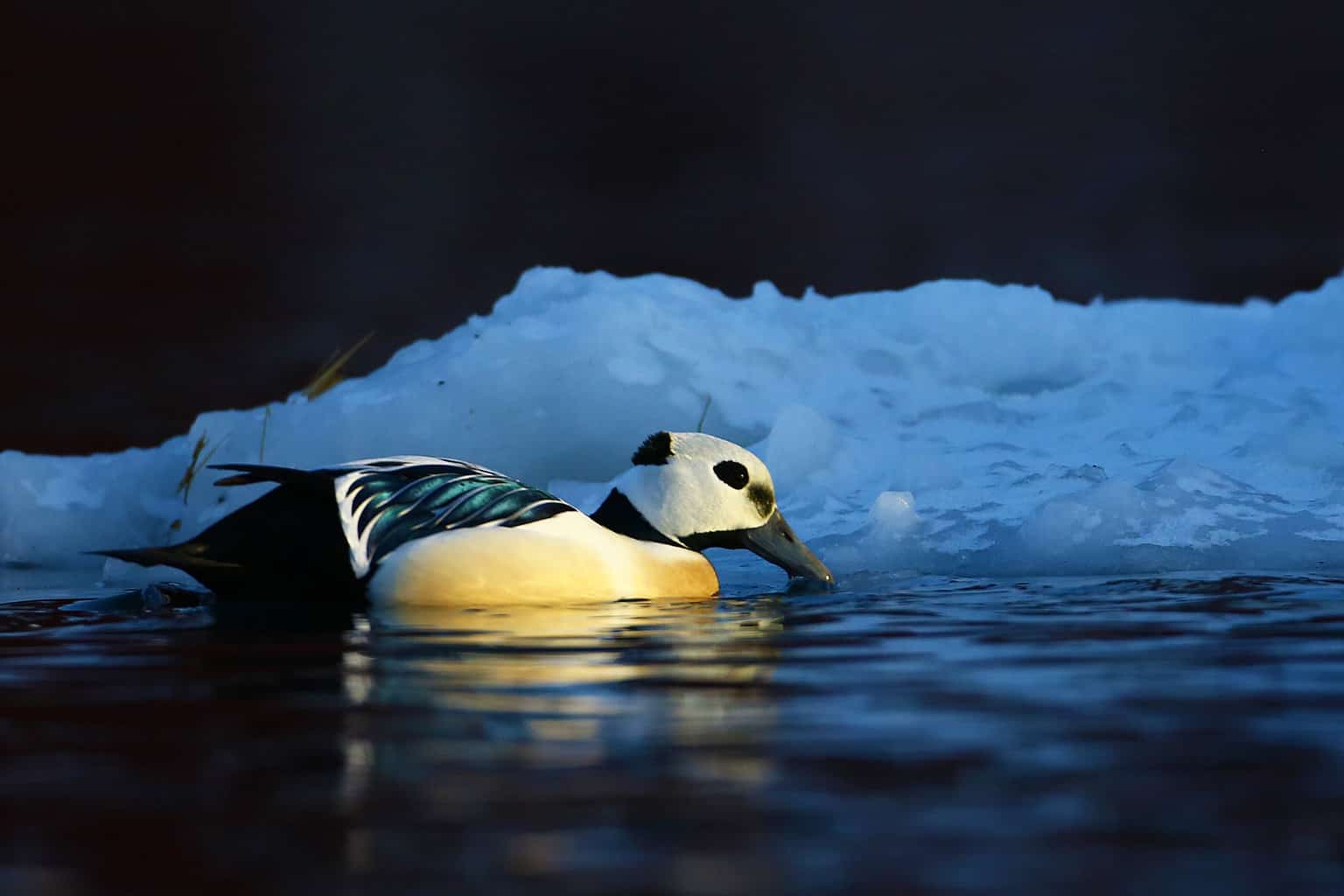
The Steller’s Eider is named after the German naturalist Georg Wilhelm Steller, who first described the bird in 1741. The Steller’s Eider is a large bird with a black head and neck, white body, and black wings.
The female bird is less brightly colored than the male, but she still has beautiful blue-gray plumage.
Common Merganser

The Common Merganser is a type of duck that is found in North America, Europe, and Asia. It’s a large bird with a long, thin bill.
The male bird has a green head, neck, white body, and black wings, but the female bird is less brightly colored than the male.
Red-breasted Merganser

The Red-breasted Merganser is a striking bird that is often seen in Alaska. It has a long, thin body with red breasts and a bill. The male’s head is black with a greenish sheen, while the female’s head is brown.
Both sexes have a white stripe above the eye. The Red-breasted Merganser is a diving duck, and it can often be seen swimming below the surface of the water in search of fish.
Common Goldeneye

The Common Goldeneye is a diving duck, and it can often be seen swimming in lakes and ponds. It feeds on small fish, insects, and crustaceans.
The Common Goldeneye is an important part of the Alaska ecosystem and is often hunted for its meat.
Barrow’s Goldeneye

The Barrow’s goldeneye is a species of waterfowl that is native to Alaska. The bird gets its name from the Barrow Strait, which is located between Alaska and Canada.
While the bird isn’t currently considered to be threatened or endangered, its numbers have declined in recent years due to habitat loss.
Harlequin Duck
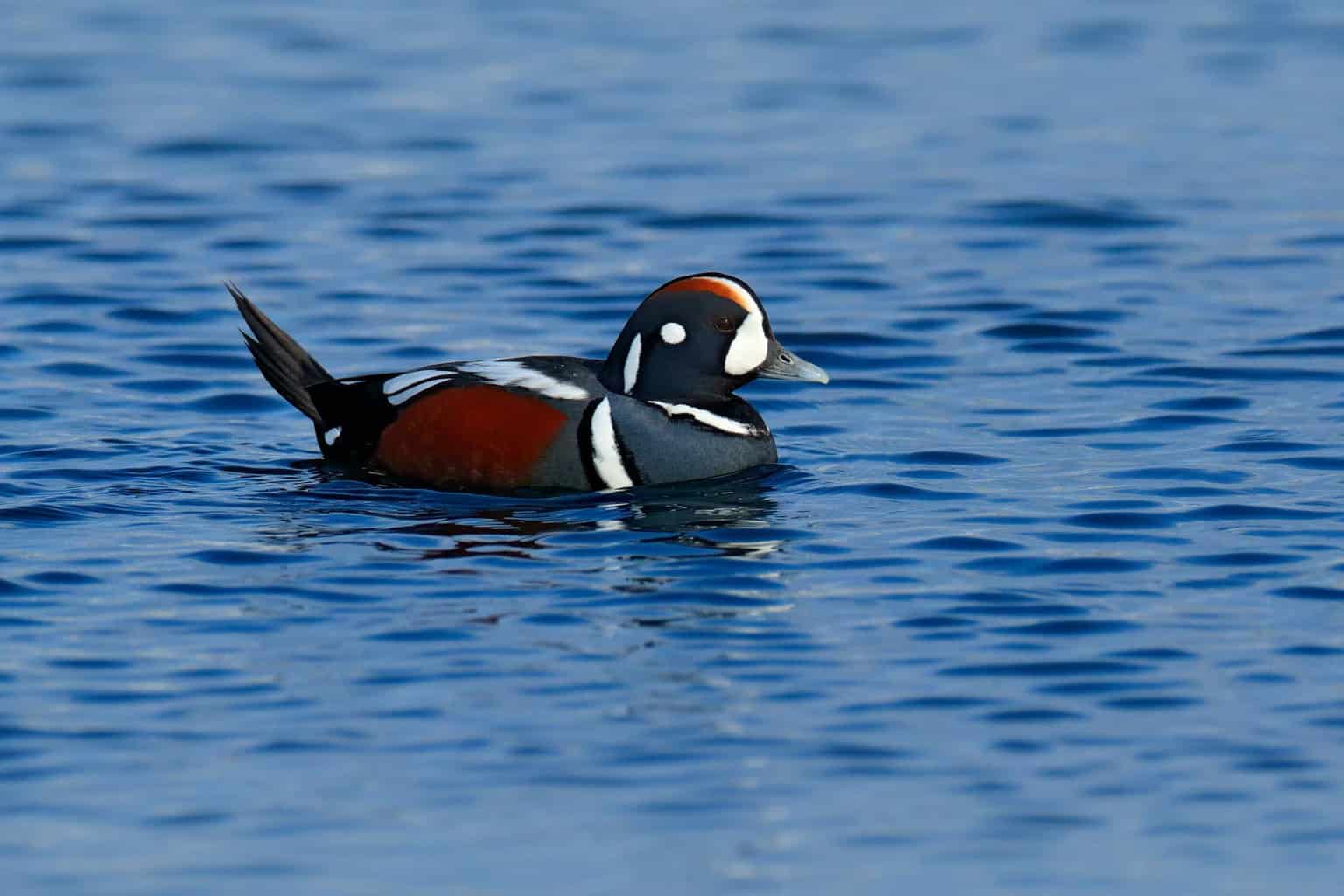
The harlequin duck is a brightly colored sea duck that breeds along fast-moving rivers and coastal areas in North America, Europe, and Asia.
In Alaska, these ducks can be found along the Gulf of the Alaska coast and on some of the larger rivers in the state, such as the Kenai River.
Long-tailed Duck

The long-tailed duck gets its name from its distinctive tail feathers, which can be more than twice as long as the bird’s body. These feathers are used for displays of courtship and aggression.
The long-tailed duck is found in North America, Europe, and Asia. It is most common in Alaska, where it breeds on lakes and ponds in the Interior and Arctic regions.
During winter, it can be found along the coastlines of Canada, the United States, and Russia.
Surf Scoter
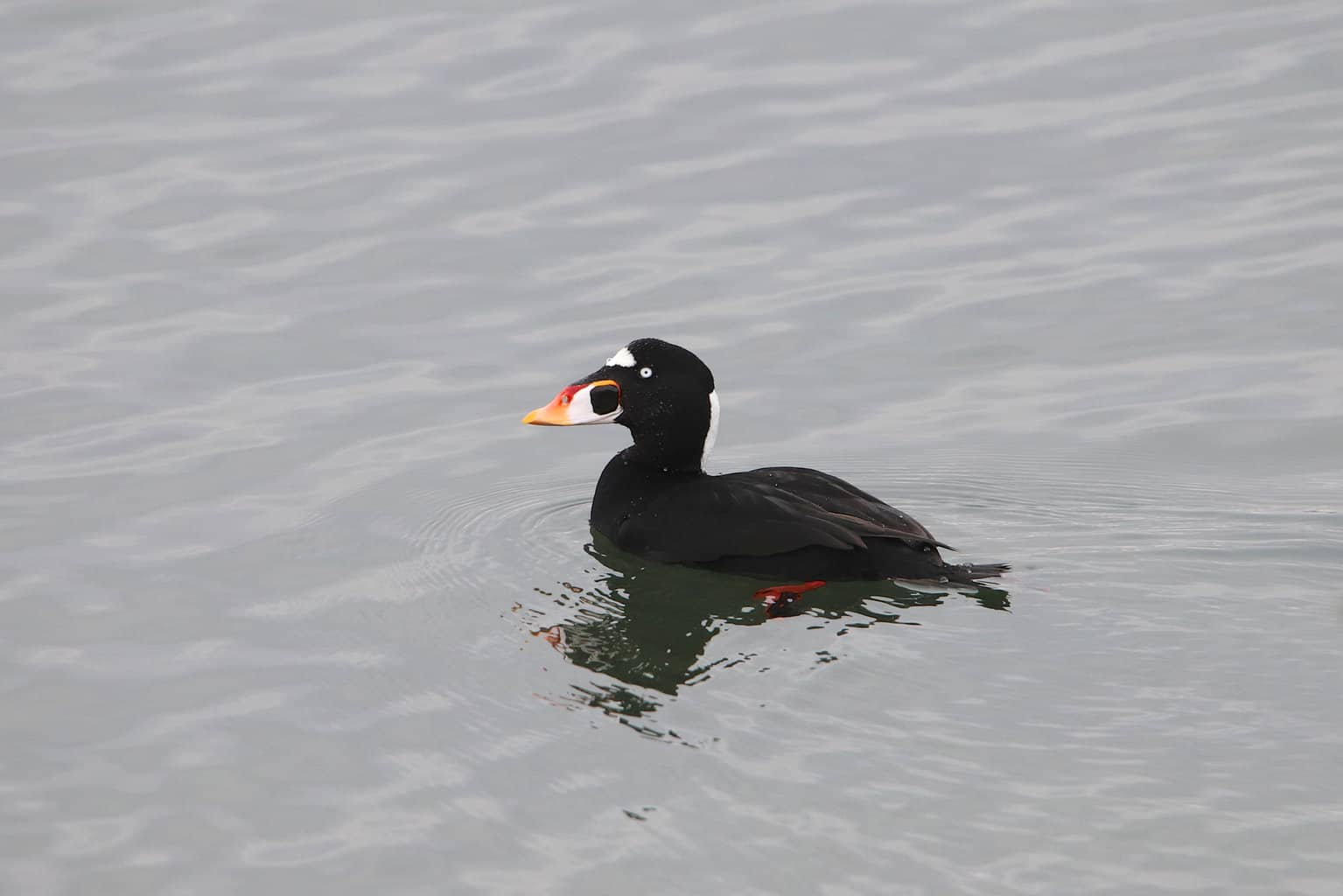
Surf Scoters are a type of seabird that is often seen near the coast of Alaska. They typically mate for life, and they often return to the same nesting area each year.
Their nesting sites are usually located on small islands or rocky outcroppings, where they can build their nests out of seaweed and grasses.
White-winged Scoter

The White-winged Scoter is a type of duck that can be found in many parts of the world, including Alaska.
These ducks are easily recognizable ducks due to their dark feathers and white wing patches. They are often found near bodies of water such as lakes, rivers, and wetlands.
Black Scoter
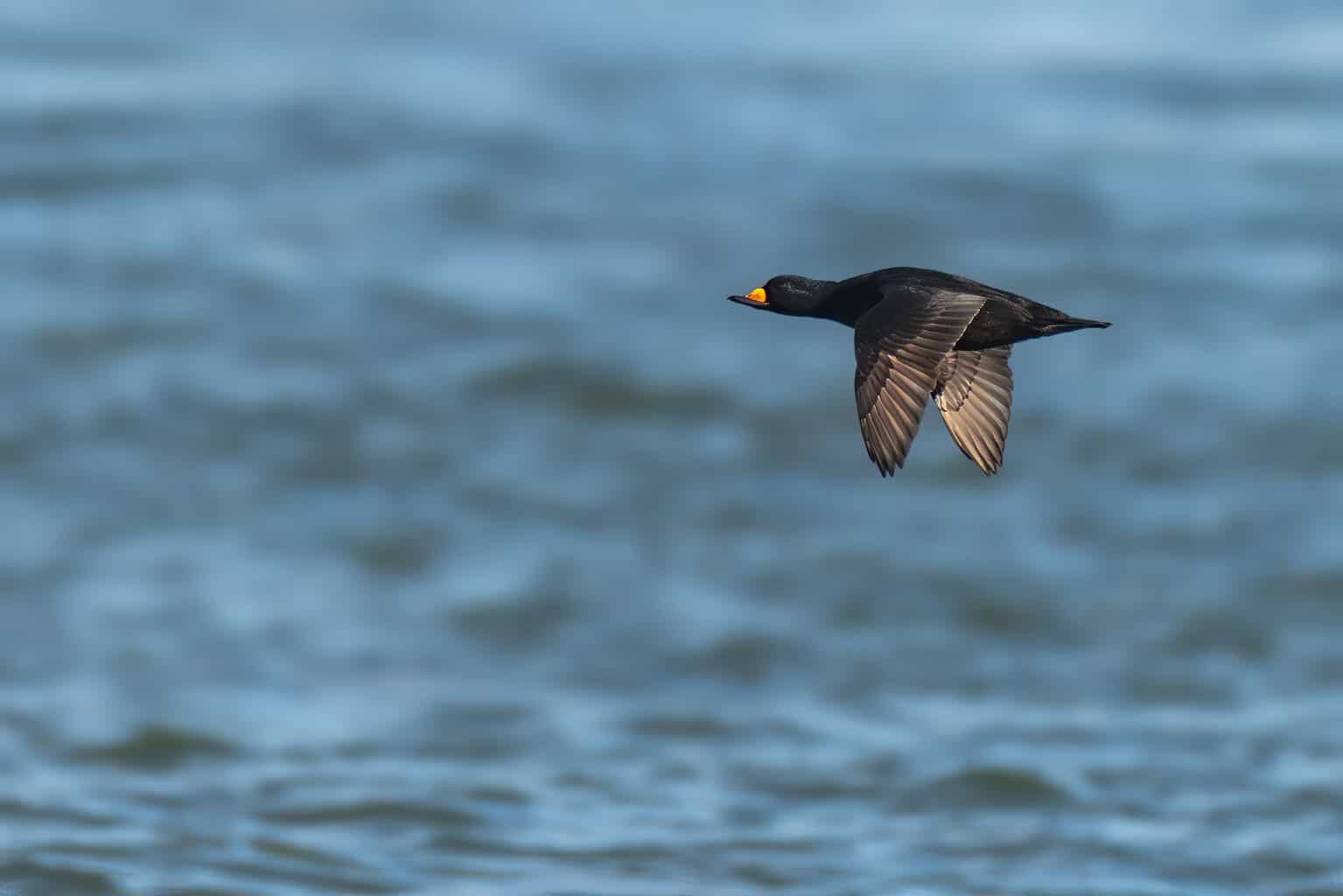
The black scoter is a large sea duck breed along North American and Europe coastal waters.
These ducks get their name from their all-black plumage. Black scoters can be found along the coastline of Alaska, particularly in the southeastern part of the state.
Rare Ducks in Alaska
As avid bird watchers will know, spotting a rare species is a thrill. These are some of the rarer ducks that have been spotted in Alaska:
- Ruddy Duck
- Northern Shoveler
- Eurasian Wigeon
- Blue-winged Teal
- Lesser Scaup
- Ring-necked Duck
- Canvasback
- Redhead
- Hooded Merganser
- Wood Duck
Have you been lucky enough to spot any of these rare ducks in Alaska? If so, we’d love to hear about it!
Wrapping Up
There you have it – a list of some of the ducks in Alaska. While you’re unlikely to see all of these ducks in one place, keep your eyes peeled, and you might just spot a few of them on your next adventure!
While you’re out exploring, you can tick a lot more species off your list, as Alaska is home to much more than just ducks. Check out this list of animals and incredible birds in Alaska for more inspiration.

